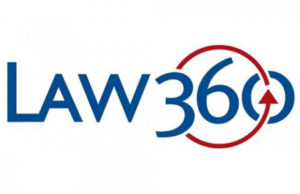Joseph Gjonola talks about the recent opinion Planned Parenthood Fed’n of Am., Inc. v. Ctr. for Med. Progress (“PPF”) on LAW360 and how it all but gutted California’s anti-SLAPP procedure when it comes to motions filed in federal court.
In a recent opinion, Planned Parenthood Fed’n of Am., Inc. v. Ctr. for Med. Progress (“PPF”), filed May 16, 2018, the Ninth Circuit all but gutted California’s anti-SLAPP procedure when it comes to motions filed in federal court. Anti-SLAPP is found in California’s Code of Civil Procedure, section 425.16 (hereinafter “section 425.16”). Federal courts have historically enforced the anti-SLAPP procedure in cases of diversity and pendent jurisdiction. But over the years various aspects of the procedure were found to be in direct conflict with the Federal Rules and set aside. The Ninth Circuit’s most recent decision has effectively turned the anti-SLAPP motion into a hybrid of either a motion to dismiss or motion for  summary judgment, depending on the challenges presented in the motion. As a result, defendants have lost the primary benefit of the anti-SLAPP process: the ability to force plaintiffs to demonstrate the total legal and factual merits of their claims. Now, plaintiffs need only respond to the specific challenges that defendants raise in the motion.
summary judgment, depending on the challenges presented in the motion. As a result, defendants have lost the primary benefit of the anti-SLAPP process: the ability to force plaintiffs to demonstrate the total legal and factual merits of their claims. Now, plaintiffs need only respond to the specific challenges that defendants raise in the motion.
To understand the significance of the recent decision, it is necessary to review why anti-SLAPP motions exist, how they operate in state court, and the limitations placed on anti-SLAPP motions in federal court. The California legislature passed section 425.16 to rescue the targets of frivolous lawsuits brought by big corporations against their economic and political adversaries. Referred to as a Strategic Lawsuit Against Public Participation (“SLAPP”), “SLAPP suits are brought to obtain an economic advantage over the defendant, not to vindicate a legally cognizable right of the plaintiff.” “[T]he ‘paradigm’ SLAPP suit is an action filed by a land developer against environmental activists or objecting neighbors of [a] proposed development.” Such SLAPPs are “aimed at preventing citizens from exercising their political rights or punishing those who have done so.”
Section 425.16 contains procedural mechanisms designed to address this abuse of the legal system. It allows a defendant to immediately terminate a frivolous lawsuit via a Special Motion to Strike (a.k.a., anti-SLAPP motion). It awards attorneys’ fees to the prevailing defendant, and gives both sides the right of immediate appeal. “The fee-shifting provision was apparently intended to discourage [SLAPPs] by imposing the litigation costs on the party seeking to ‘chill the valid exercise of the constitutional rights of freedom of speech and petition for the redress of grievances.’” In addition, once an anti-SLAPP motion is filed, the plaintiff is not allowed to amend the complaint, and if the plaintiff loses, the claims are dismissed without leave to amend.
The anti-SLAPP process has two steps that the court refers to as Prongs One and Two. Prong One is the defendant’s burden to establish that the complaint arose from “any act in furtherance of the [defendant’s] right of petition or free speech…in connection with a public issue.” That is all that the defendant must accomplish when filing an anti-SLAPP motion. If the defendant meets that burden, then comes Prong Two, where the burden shifts to the plaintiff who must “establish that there is a probability that the plaintiff will prevail on the claim.” The plaintiff must make this showing without the benefit of discovery.
This is the heart and soul of section 425.16, requiring the plaintiff to immediately demonstrate the legal and factual merits of the lawsuit with admissible evidence. Anyone can allege a legally sufficient complaint, and then bury the defendant in legal fees before reaching the summary judgment stage. The goal of an anti-SLAPP motion is to halt the progress of the litigation and minimize the defendant’s legal expense unless and until the court determines that there is factual support for the lawsuit.
What is important to note before considering the Ninth Circuit’s new decision is that the defendant has no initial burden under Prong Two, and state courts have repeatedly rejected attempts to expand the defendants’ burden or required an anti-SLAPP motion to contain legal or factual challenges to the complaint. Of course, many if not most anti-SLAPP motions contain legal or factual challenges, similar to those found in a demurrer or summary judgment motion. And the language of section 425.16 allows the court to examine evidence from both sides. But the goal of the anti-SLAPP procedure is to require the plaintiff to demonstrate to the court, through admissible evidence, that its claims are not frivolous if the lawsuit arose from protected speech activity. To that end, the defendant need only prove the latter.
PPF is a serious departure from the anti-SLAPP procedure that used to prevail in federal court, where plaintiffs had the burden to legally and factually support their claims in their entirety.
Federal courts have long acknowledged that in diversity and pendent jurisdiction cases, litigants are entitled to the substantive objectives advanced by section 425.16, so long as the procedure does not “result in a ‘direct collision’ with a Federal Rule of Civil Procedure.” On this basis, federal courts have refused to enforce aspects of the anti-SLAPP procedure. For example, the court previously rejected subdivisions (f) and (g). One requires anti-SLAPP motions to be brought within 60 days following service of the complaint, and the latter stays discovery pending a decision. Taken together they force the plaintiff to obtain sufficient evidence before filing suit, because there is no practical opportunity for discovery afterwards. In contrast, the Federal Rules ensure that adequate discovery will occur before summary judgment is considered. Thus, the Ninth Circuit previously determined that “[b]ecause the discovery-limiting aspects of § 425.16(f) and (g) collide with the discovery-allowing aspects of Rule 56, these aspects of subsections (f) and (g) cannot apply in federal court.” Thus, plaintiffs responding to an anti-SLAPP motion in federal court have been allowed discovery to obtain the evidence needed to support their prima facie case. Federal courts have also found that the state court’s prohibition on granting leave to amend, conflicts with the Federal Rules and cannot be enforced in federal court proceedings.
The Ninth Circuit’s newest ruling, Planned Parenthood Fed’n of Am., Inc. v. Ctr. for Med. Progress (“PPF”), is a sweeping decision that expressly converts any anti-SLAPP motion brought in federal court into either a motion to dismiss or a summary judgment motion, each to be governed by their respective Federal Rules. It found that any other treatment of anti-SLAPP motions would conflict with federal procedure. As a result, defendants who bring California anti-SLAPP motions in federal court have the burden under both prongs of the decision making process, and presumably plaintiffs need only respond to defendants’ specific challenges under Prong Two.
In PPF, the plaintiffs, about a dozen Planned Parenthood entities, sued defendants, Center for Medical Progress, et al., alleging wrongful conduct over the manner in which defendants conducted undercover investigations. Defendants filed an anti-SLAPP motion on the grounds that plaintiffs’ state law claims arose out of defendants’ undercover investigative journalism, which falls within the scope of the anti-SLAPP statute. The motion also challenged the complaint on legal grounds, paralleling the defendants’ concurrently filed motion to dismiss. “Defendants made no evidentiary-based argument to undermine Plaintiffs’ probability of success…” Under Prong One, the district court assumed that plaintiffs’ complaint arose from protected speech activity. But under Prong Two, the plaintiffs offered no evidence in support of their claims, and the district court required none. Instead, citing the motion’s lack of an “evidentiary-based argument,” the court applied the standards of Federal Rule 12(b)(6). The court ultimately denied the anti-SLAPP motion, along with the defendants’ motion to dismiss.
On appeal, “Defendants argue[d] that, once they had shown that Plaintiffs’ suit arose from Defendants’ acts in furtherance of their rights of petition or free speech, Plaintiffs were required to demonstrate a probability of prevailing on the challenged claims, and that Plaintiffs did not meet this burden because they did not provide rebutting evidence.” The PPF court acknowledged as much, even citing its prior decision on the topic: (“Once it is determined that an act in furtherance of protected expression is being challenged…plaintiff must demonstrate that the complaint is legally sufficient and supported by a prima facie showing of facts to sustain a favorable judgment if the evidence submitted by the plaintiff is credited.”
 But in a bold move, the PPF court created a new and vastly different anti-SLAPP procedure. It expressly adopted the decision of a prior unpublished case that held: “If a defendant makes an anti-SLAPP motion to strike founded on purely legal arguments, then the analysis is made under Fed. R. Civ. P. 8 and 12 standards; if it is a factual challenge, then the motion must be treated as though it were a motion for summary judgment and discovery must be permitted.” Applying this new standard to the facts of the case before it, the court held that “there’s no requirement for a plaintiff to submit evidence to oppose contrary evidence that was never presented by defendants.”
But in a bold move, the PPF court created a new and vastly different anti-SLAPP procedure. It expressly adopted the decision of a prior unpublished case that held: “If a defendant makes an anti-SLAPP motion to strike founded on purely legal arguments, then the analysis is made under Fed. R. Civ. P. 8 and 12 standards; if it is a factual challenge, then the motion must be treated as though it were a motion for summary judgment and discovery must be permitted.” Applying this new standard to the facts of the case before it, the court held that “there’s no requirement for a plaintiff to submit evidence to oppose contrary evidence that was never presented by defendants.”
This is a serious blow to the remaining benefits that section 425.16 provided at-risk defendants in federal court. As discussed above, federal courts already allowed plaintiffs to conduct discovery in aid of opposing anti-SLAPP motions. Now, under the PPF rule, defendants will have to conduct their own discovery in preparation for an anti-SLAPP motion, if they want to present factual challenges and force plaintiffs to submit contrary evidence. As the defendants in PPF argued, this “defeat[s] the ‘central purpose’ of the anti-SLAPP process: screening out meritless claims that arise from protected activity, before the defendant is required to undergo the expense and intrusion of discovery.”
But PPF did not just place the initial burden to produce evidence on the defendants, it shifted the entire Prong Two burden to defendants. By holding that anti-SLAPP motions will be decided according to the standards established in Federal Rules 12 or 56, depending on whether the motion presents a legal or factual challenge, the decision effectively requires defendants to present legal or factual challenges in the motion, where no such requirement existed before. Remember that a defendant who brings an anti-SLAPP motion in state court has only one burden: demonstrate that the plaintiff’s claims arose from defendant’s protected speech. That is Prong One. If the defendant is successful then plaintiff has the burden to prove the legal and factual merit of its case. That is Prong Two. Defendants have no burden under Prong Two – no requirement to articulate a specific factual or a legal challenge to the plaintiffs’ complaint. As the PPF defendants correctly argued to the court of appeal: “[T]he anti-SLAPP motion itself is the challenge to plaintiffs’ ability to meet their burdens, both evidentiary and legal.”
Under Rule 12 or 56 the defendant has the burden to mount specific challenges to the plaintiff’s lawsuit. Moreover, the motion establishes the scope of legal and factual issues under consideration by the court. In response, plaintiffs only have to oppose the specific challenges that defendants present, rather than demonstrating the legal and factual sufficiency of the entire case, as they would under section 425.16. For example, if a defendant demonstrates under Prong One that three causes of action arise from the defendant’s speech activity, but challenges the legal sufficiency of only one of those causes of action then, according to the standards for a motion to dismiss under Rule 12(b)(6), the opposition can ignore the other two causes of action without risk of losing them.
Thus, PPF is a serious departure from the anti-SLAPP procedure that used to prevail in federal court, where plaintiffs had the burden to legally and factually support their claims in their entirety. Going forward, anti-SLAPP motions in federal court are merely hybrids of typical motions to dismiss and motions for summary judgment. A defendant can bring either one styled as an anti-SLAPP motion by appending a Prong One argument to it. If successful, the defendant will earn  attorneys’ fees, assuming the defendant survives that long. Attorneys’ fees are a substantial benefit of the anti-SLAPP statute, but by dramatically changing the anti-SLAPP process in federal court, the PPF decision has robbed defendants of what used to be a slingshot with which to slay a Goliath litigation, and has left defendants to grapple with it instead.
attorneys’ fees, assuming the defendant survives that long. Attorneys’ fees are a substantial benefit of the anti-SLAPP statute, but by dramatically changing the anti-SLAPP process in federal court, the PPF decision has robbed defendants of what used to be a slingshot with which to slay a Goliath litigation, and has left defendants to grapple with it instead.
Joseph C. Gjonola is a partner at RPNA. He practices in the areas of general business litigation, complex commercial litigation and intellectual property. He also specializes in writs and appeals. His record reflects versatility in legal substance and procedure, from advocating for individuals in mediation to confronting large corporations in federal courts.
He is pleased to answer any questions you may have regarding this court opinion or any business matter. Please contact Joseph at (818) 992-9999 or via email.



